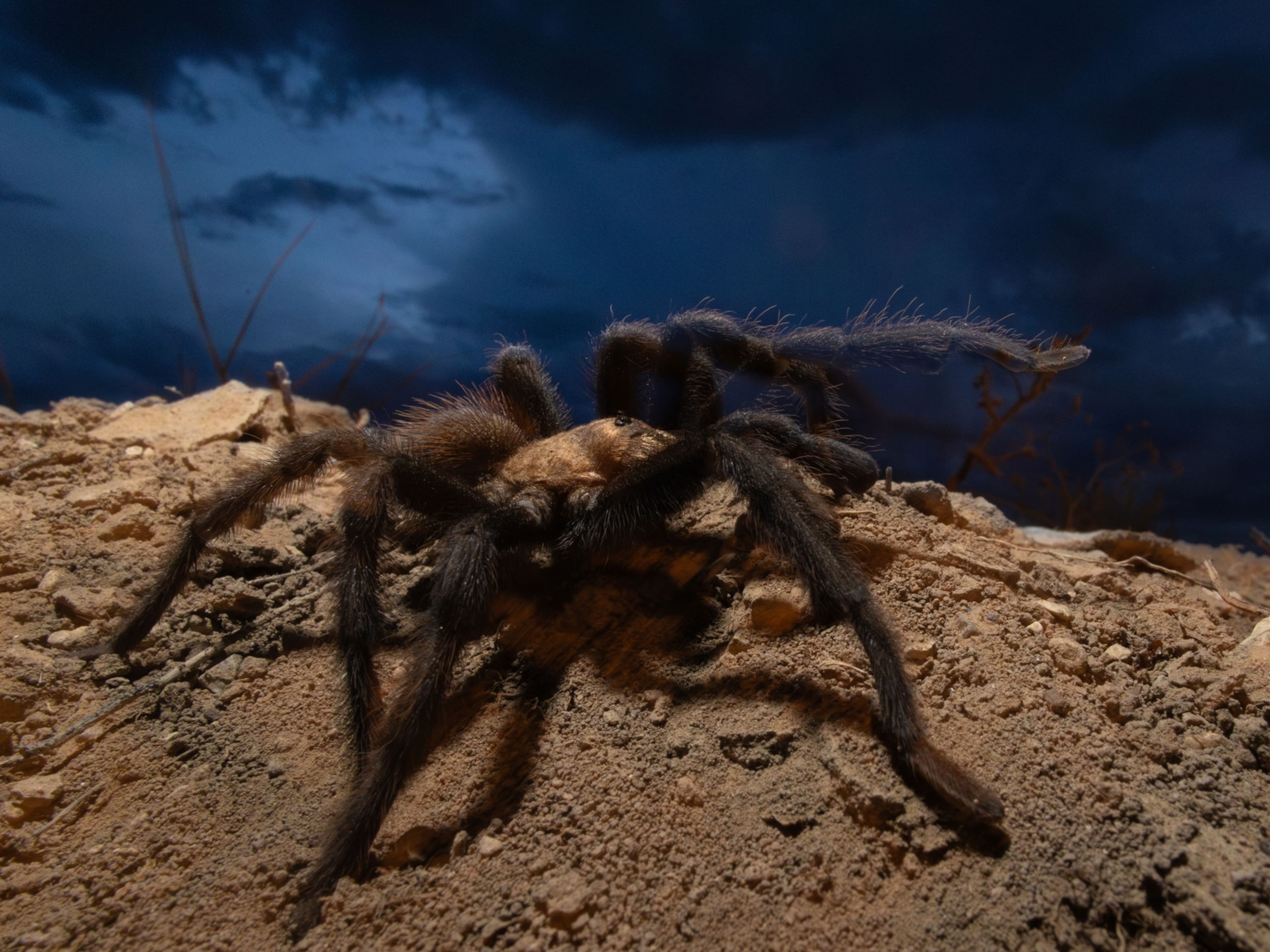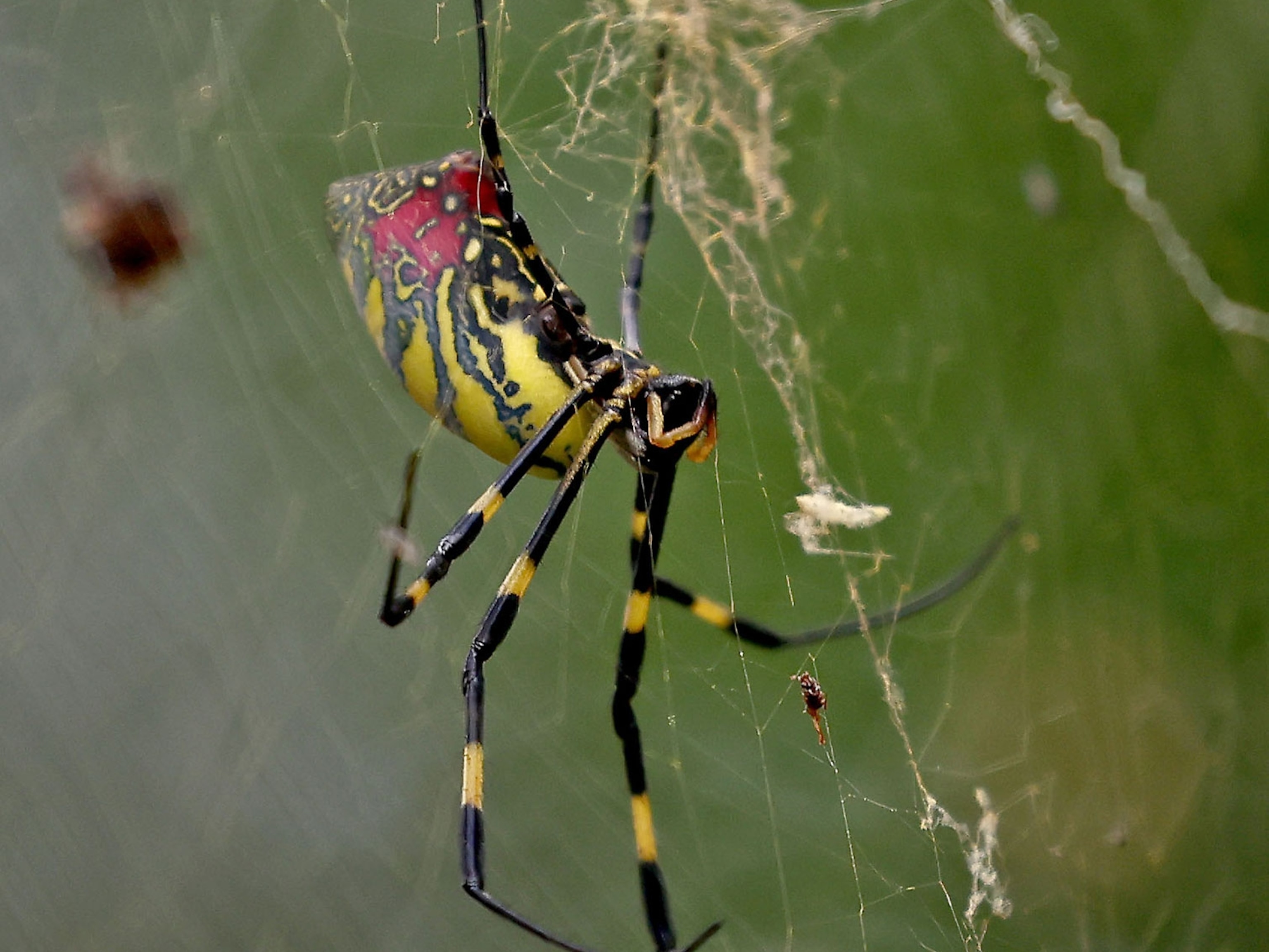A Tarantula Sheds Its Skin in New Time-Lapse Video
This venomous, but docile, Mexican red-kneed tarantula can be seen molting over seven hours in just 40 seconds.
This Mexican red-kneed tarantula is crawling out of its own skin.
A time-lapse captured its seven-hour molting process at the Cincinnati Zoo and Botanical Gardens. The venomous but docile tarantula is native to Mexican deserts and scrublands, and is named after its red-orange leg joints.
As a tarantula grows, it must shed its old, stiff exoskeleton. The ends of its legs can detect smells, tastes, and vibrations. The new exoskeleton is softer and more sensitive until it hardens, usually within a few days.
Molting provides new sensory and protective hairs, and helps shed external parasites.
See another video of the same species molting, and learn more about the spider.





